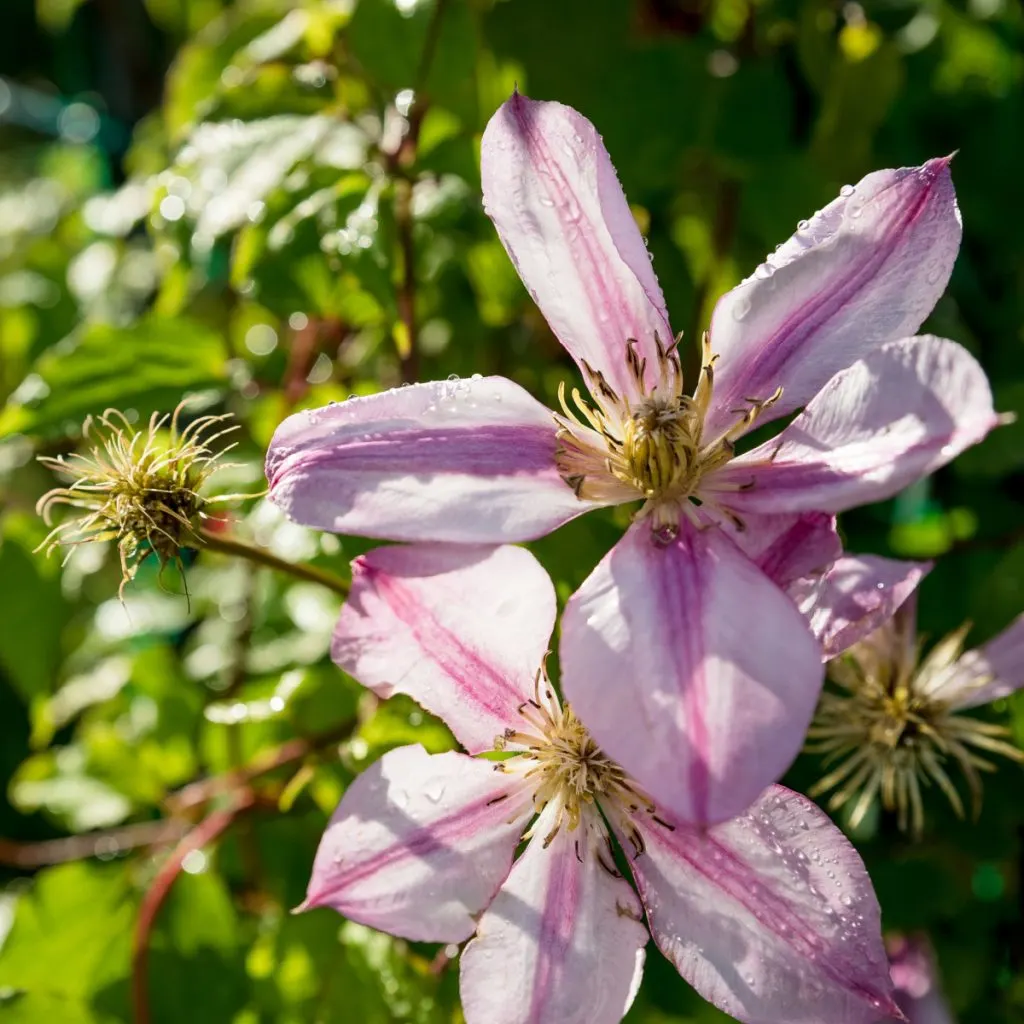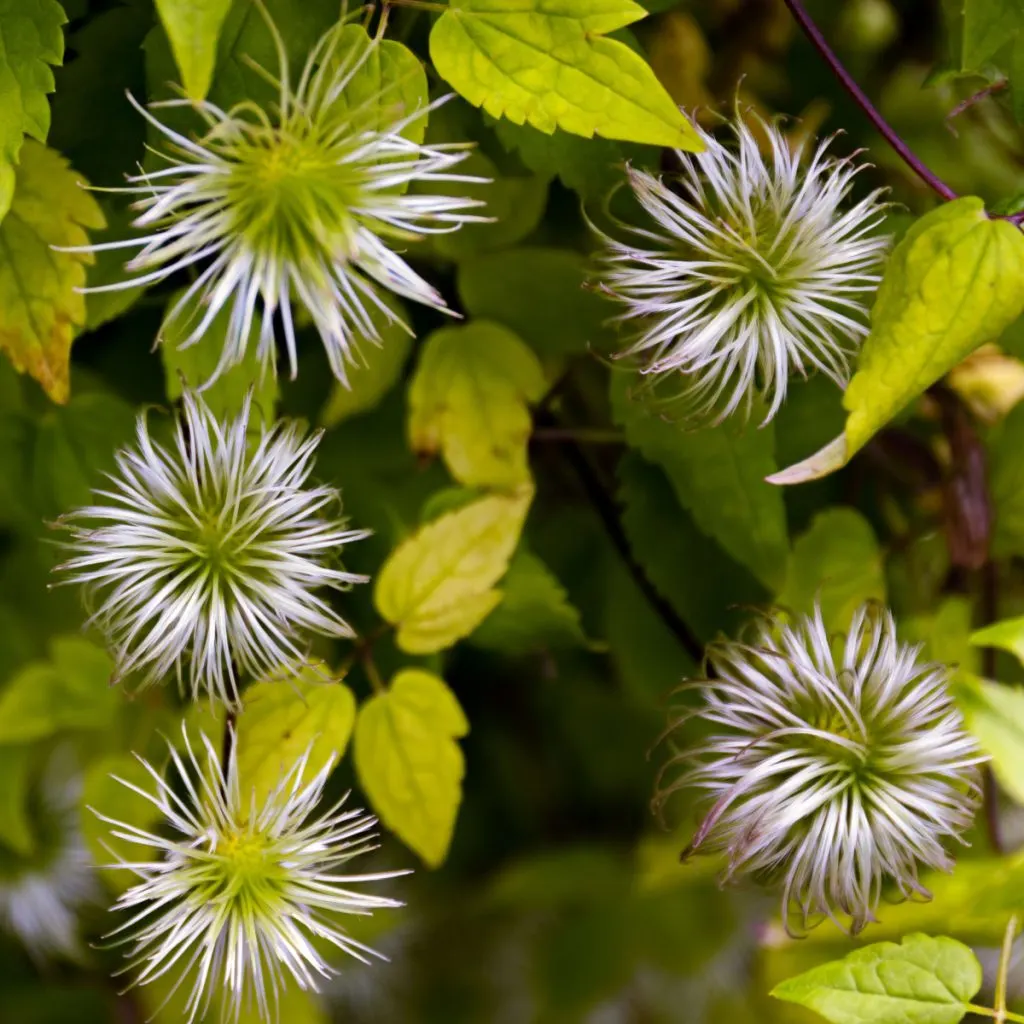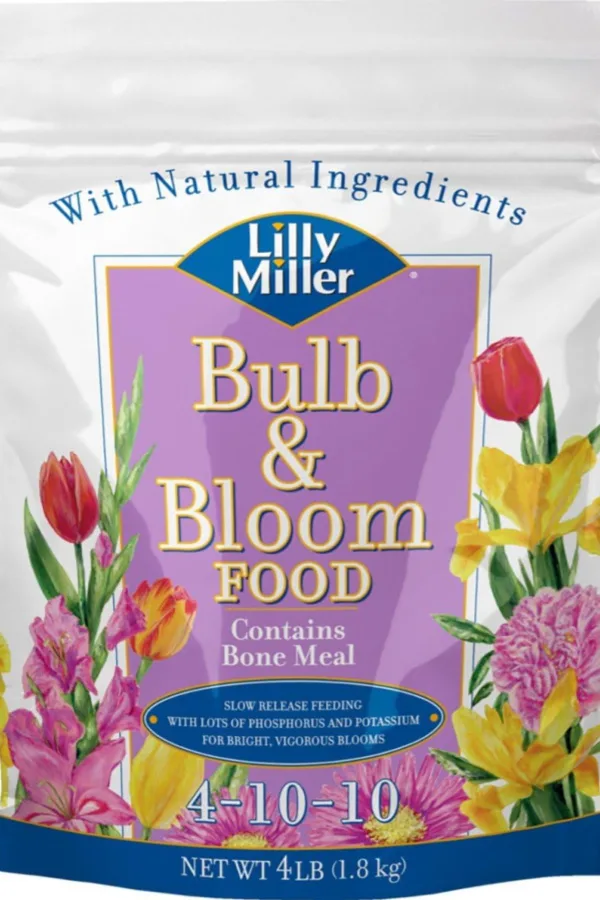Wondering what to do with your clematis after it blooms – and whether or not you can get it to bloom again this year?
When it comes to beautiful flowering vines, clematis is one of the most popular choices for home gardeners. With their showy flowers, they bring all kinds of color and charm to fences, arbors, trellises, and garden walls.
But what many gardeners struggle with is what to do with the plants once they complete their flowering cycle in late spring or early summer. As it turns out, what you do is pretty important. In fact, the care you give your clematis can have a huge impact on how healthy it stays – and whether or not it has a chance to bloom again this year!

What To Do With A Clematis Plant After It Blooms
The Importance Of Deadheading
One of the most important steps to take after your clematis blooms is deadheading. This simple task helps the plant save energy and focus it in the right direction.
When clematis blooms fade, they don’t just fall off. Instead, they remain on the vine and begin to form seed heads. While seed heads may seem harmless or even decorative, they actually take a lot of energy from the plant.
Instead of sending energy into new growth or potential new blooms, the clematis diverts that power into seed production. That can leave the plant weak and tired and lead to fewer flowers later on. But by removing the spent blooms as soon as they fade, you help stop that energy loss.
The process of removing old blooms is known as deadheading. Deadheading simply means clipping off the old, dying flower heads before the plant starts making seeds. You can do this with a pair of sharp garden snips or scissors.
Snip right below the base of the old flower where it connects to the stem. Try to remove only the flower and not cut too much stem or foliage with it. Doing this regularly as flowers begin to fade, will help your clematis stay focused on growing strong.

Post Bloom Pruning – How A Light Trim Can Help Clematis
Once all of the first round of blooms are gone and you’ve deadheaded the plant, it’s also the perfect time to give your clematis a light trim. Cutting the plant back a little will help it regrow with better shape and more vigor.
Light trimming encourages clematis to send out fresh growth from its base and lower nodes. This new growth can be important not just for helping the plant fill out again, but also for setting up a possible second bloom period later in the season, depending on the clematis variety.
When trimming, don’t go overboard. The goal isn’t to cut the entire plant back to the ground. All you are looking to do is tidy it up and spark new growth. Look at each vine and find the last healthy set of leaves or leaf nodes down the vine. Then cut back about 8 to 10 inches from the top to just above that point.
These nodes are where new shoots and buds can begin to form. A good rule of thumb is to leave at least a few feet of vine on the plant, especially for large, well-established clematis.
Fertilizing Clematis After It Blooms
After pruning and deadheading, clematis needs a good dose of extra nutrients to help it bounce back. Trimming and flower production take a lot out of a plant, and feeding it the right kind of fertilizer at this point can really help power new growth and more buds.
The best kind of fertilizer to use after blooming is one that has a bit more phosphorus and potassium than nitrogen. A formula close to 5-10-10 works well. Many bulb fertilizers have this makeup and they are ideal for clematis fertilizing. Affiliate Link: Lilly Miller Bulb & Bloom Food 4-10-10 4lb

The lower nitrogen keeps the plant from putting on too much leafy growth, while the higher phosphorus and potassium help form more buds and stronger stems.
You can use either a granular or liquid fertilizer, but make sure to apply it right after trimming and deadheading for the best results. If using a granular fertilizer, scatter it lightly around the base of the plant and scratch it into the soil. Water it in well so it can begin breaking down and soaking into the roots.
If using a liquid fertilizer, dilute it according to the label and pour it slowly around the root zone of the plant. You can also apply a second light feeding four weeks later if you start to see new growth coming back strongly. But be careful not to over-fertilize. Too much fertilizer can cause more harm than good and may actually reduce flowering.
Regular Watering – The Key To A Second Bloom
Another key to strong regrowth and future blooming is water. Clematis vines are thirsty plants, especially during hot summer weather. Once blooming stops and the plant shifts into recovery and regrowth mode, consistent watering is vital.
If clematis vines dry out, they can go into stress and stop growing or blooming completely. Worse yet, they may wilt or start dropping leaves.
The general rule is to make sure clematis receives about one inch of rainfall or the same amount in watering each week. If rain is not in the forecast, use a watering can or hose to deliver the moisture. It’s best to water slowly and deeply so that the water can soak down into the roots. Shallow watering only wets the surface and doesn’t give the root system what it really needs.

To help hold moisture in the soil, add a few inches of mulch around the base of the plant. Mulch not only keeps the soil moist, but also helps to keep the roots cool and protected during warm summer days. Always try to keep mulch a couple of inches away from the base of the main stem to prevent rot.
Many varieties of clematis will send up a second round of flowers later in the summer or early fall. This is especially true when trimmed and cared for properly after the first bloom. If you do notice new buds forming, keep up with watering and consider giving one more small dose of fertilizer with a bloom-boosting formula to help support the second flush.
Even if your clematis doesn’t re-bloom this season, the post-bloom care will set it up well for next year, keeping the plant strong and ready to burst with flowers again in spring.
This Is My Garden
Follow Our Facebook Page For Great Gardening Tips And Advice! This Is My Garden Facebook Page
This Is My Garden is a garden website created by gardeners, for gardeners. Jim and Mary Competti have been writing gardening, DIY and recipe articles and books and speaking for over 15 years from their 46 acre Ohio farm. They publish three articles every week, 52 weeks a year. Sign up today to follow via email, or follow along!
